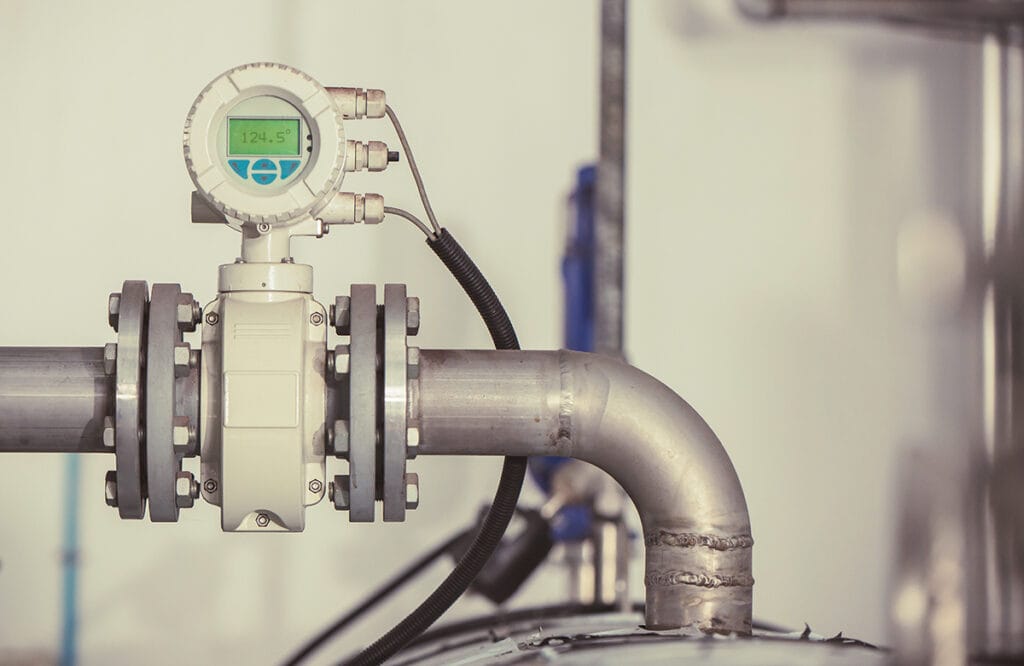Understanding film temperature is pivotal when delving into the intricacies of heat transfer, particularly in situations where fluids are involved. This blog post aims to unravel the importance of film temperature in various heat transfer processes.
Join us as we delve into the essence of film temperature—what it is, why it holds significance, and the art of mastering its control to optimize heat transfer efficiency. Learn about its role in industrial equipment, such as hot oil heaters, tank heating coils, and heat exchangers. Uncover practical strategies for fine-tuning film temperature, ensuring your processes consistently operate within the Goldilocks zone of efficiency.
What is Film Temperature?
Film temperature is the average temperature difference between the surface of a solid (like a heat exchanger or a pipe) and the fluid flowing over or through it. Imagine you have a hot cup of coffee, and you blow on it to cool it down. The temperature of the coffee’s surface where you blew on it and the air you’re blowing create a kind of average temperature. This average temperature is what’s called the film temperature.
So, why does it matter? Well, the rate at which heat is transferred depends on the temperature difference between the hot surface and the cooler fluid. Film temperature helps us quantify this difference. And in processing equipment, film temperature is crucial because it directly impacts the efficiency of heat transfer.
When it comes to processing equipment, like heaters or pipes with hot liquids, we use film temperature to figure out how efficient they are at transferring heat.
Why Does Film Temperature Matter?
Efficient heat transfer is essential for many industrial processes, from cooling in power plants to chemical reactions in reactors. If you don’t maintain the right film temperature, you could experience problems like reduced heat transfer rates, increased energy consumption, or even equipment damage due to overheating or excessive cooling.
Film temperature is a critical factor in hot oil heaters, tank heating coils, and heat exchangers alike. Here, we’ll dive into each.
In hot oil heaters, a heat transfer fluid (typically oil) is heated to a high temperature and then circulated to provide heat to various processes. In this context, controlling film temperature is vital to prevent overheating of the oil, which can lead to thermal degradation of the product. Also, the right film temperature ensures efficient heat transfer from the heating source to the oil, which is then used to heat other processes or equipment.
In tank heating coils, film temperature matters because it influences the rate at which heat is transferred from the coils to the tank’s contents. Proper control of film temperature ensures even and efficient heating. If the film temperature is too high, it can lead to localized overheating and potentially damage the tank or its contents.
Film temperature is crucial in heat exchangers because it determines the efficiency of heat transfer between the two fluids. The temperature difference between the fluids’ film temperatures drives the heat exchange. Properly controlling film temperature ensures that heat exchangers operate at their designed efficiency, optimizing energy usage.
Learn key factors in choosing the right thermal fluid for your application.
Tactics to Adjust Film Temperature
Because controlling film temperature is crucial in various processes, we need to understand how to adjust it for optimal efficiency and heat transfer. Here, we’ll explore some options.
Adjust Flow Rate: Controlling the flow rate of the fluid can help manipulate film temperature. Higher flow rates generally lower film temperature by increasing the rate at which cooler fluid replaces the warmer fluid near the surface.
Change Inlet Temperature: Adjusting the temperature of the fluid entering the system can have a significant impact. Cooler inlet fluid will lower the film temperature, while warmer fluid will increase it.
Modify Surface Area: Changing the surface area exposed to the fluid can affect film temperature. Increasing surface area can improve heat transfer, while reducing it can raise film temperature.
Insulation: Properly insulating process equipment can help maintain the desired film temperature by preventing heat loss or gain from the surroundings.
When considering these tactics, it really comes down to avoiding extremely high or low film temperatures, as they can lead to inefficient heat transfer, equipment damage, or safety concerns, especially in chemical processing where unexpected chemical reactions can occur with improper temperature control. Poor mixing of fluids can also create temperature gradients near the surface, which should be avoided.
Proper monitoring, control and regular maintenance are vital to ensure film temperatures remain optimized for your process conditions. Using temperature sensors and control systems to continuously monitor and adjust film temperature is a smart idea, along with routine cleaning and maintenance checks.
Remember, maintaining the right film temperature is a balancing act. It’s about finding the sweet spot where heat transfer is efficient without causing equipment problems. So, in the world of processing equipment, film temperature is like the Goldilocks principle: not too hot, not too cold, but just right for optimal performance.
Process Solutions from Enerquip
From film temperatures to materials of construction, leave the design and engineering to the experts at Enerquip. For a variety of stock and custom process solutions, we invite you to contact us or request a quote today.
More from the Enerquip Blog
- How Economizers Enhance Thermal Oxidizers
- Five Ways to Increase Terminal Efficiency
- Decoding the Delicate Balance of Sizing Shell and Tube Heat Exchangers
- Insulation Jackets: Enhancing Efficiency and Performance of Shell and Tube Heat Exchangers
- Heat Exchanger vs. Asphalt Heater for Asphalt Applications
- Benefits of Tank Coils with Helically Wound Fins

